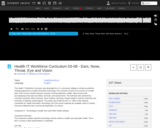
This unit describes the ears, nose, throat, eyes and vision.
- Subject:
- Health and Medical Science
- Material Type:
- Lecture
- Provider:
- Open Michigan
- Author:
- Oregon Health & Science University
- Date Added:
- 01/13/2021
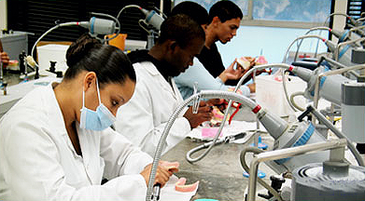

This unit describes the ears, nose, throat, eyes and vision.
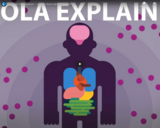
What does the Ebola virus actually do in your body? Why is it so dangerous and why does it kill so many people? We take a look at the apocalyptic war that rages in the body after an infection by the Ebola virus and the soldiers fighting. The video "The Ebola Virus Explained - How Your Body Fights For Survival" is a resource included in the Disease topic made available from the Kurzgesagt open educational resource series.

This unit describes the overview and introduction to the electronic health record (EHR).

The majority of medical coding today is facilitated by medical coding software. This video will explain some of the qualities of medical coding software, and will show you how coding electronically will save you time and raise your coding efficiency.
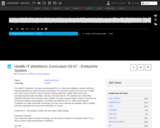
This unit describes the endocrine system.
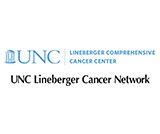
This presentation discusses the end-of-life care options that are available to patients experiencing cancer. The presenter also discuss resources that are available to family members during the cancer journey.
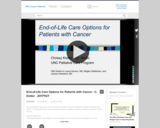
This presentation discusses the end-of-life care options that are available to patients experiencing cancer. The presenter also discuss resources that are available to family members during the cancer journey.
Lecture Objectives:
-Distinguish between the palliative care and hospice care services that are available to cancer patients.
-Define the providers, admittance requirements, care structure, and expense coverage available for palliative and hospice care services.
-Discuss the importance of collaboration and teamwork to enhance quality of end-of-life care for cancer patients.
-Identify resources that are available to patients and families to learn more about palliative and hospice care services.

This unit describes the traditions and values that guide physicians, nurses, and allied health professionals. It explores medical ethics, professionalism and legal duties and applies ethics and professionalism to specific topics, including health informatics.
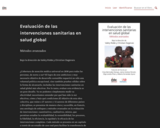
¿Cobertura de atención médica universal en 2030 para todas las personas, de norte a sur? El logro de este ambicioso y muy necesario objetivo de desarrollo sostenible requerirá no sólo una voluntad política excepcional, sino también pruebas sólidas sobre la forma de alcanzarlo, incluidas las intervenciones sanitarias en salud global más efectivas. Por lo tanto, evaluar esta evidencia es un gran desafío. Ya no podemos simplemente medir su efectividad: necesitamos entender por qué han sido (o no) efectivas, cómo y bajo qué condiciones.El objetivo de esta obra colectiva, que reúne a 27 autores y 12 autoras de diferentes países y disciplinas, es presentar de manera clara y accesible, en francés, una antología de enfoques y métodos avanzados en la evaluación de intervenciones: cuantitativos, cualitativos, mixtos, que permitan estudiar la evaluabilidad, la sostenibilidad, los procesos, la fidelidad, la eficiencia, la equidad y la eficacia de las intervenciones complejas. Cada método se presenta en un capítulo a través de un estudio de caso real para facilitar la transferencia de este valioso conocimiento.
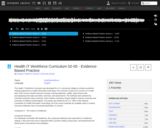
This unit describes the application of evidence-based medicine (EBM). The discussion begins with the framing of clinical questions that can be answered by appropriate evidence. It then demonstrates how to find and apply the best evidence for answering four major types of clinical questions: interventions, diagnosis, harm, and prognosis. The unit also introduces summarizing of evidence (systematic reviews) as well as clinical practice guidelines and concludes with a discussion of the limitations of EBM.
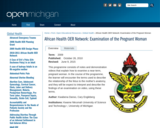
This programme consists of notes and demonstration videos that explain how to examine a near-term, pregnant woman. In the course of the programme, the learner will encounter the terms used to describe the relationship of the fetus to the mother's anatomy, and they will be expect to interpret and describe the findings of an examination on video, using these terms.
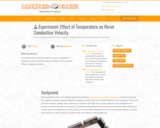
In this activity, students will learn how the conduction velocity of a nerve is dependent on temperature and will directly measure conduction veloicty under two different temperature conditions. The resource, ''Effect of Temperature and CV (doc)'' included in "Lesson 3 Neurophysiology and Neuropharmacology" is a part of "Unit 01 Intro to neuroscience" included in Health & Life Sciences HLS - Course 4.

In this lab, students will learn how skin senses the outside world. They will also learn how the brain takes in and processes information from the sensing cells and neurons in the skin. The resource, ''How Your Skin Senses (doc)'' included in "Lesson 3 Neurophysiology and Neuropharmacology" is a part of "Unit 01 Intro to neuroscience" included in Health & Life Sciences HLS - Course 4.

In this lab, students will learn how to measure the conduction velocity of a spike using an earthworm. The resource, ''Conduction Velocity (pdf)'' included in "Lesson 3 Neurophysiology and Neuropharmacology" is a part of "Unit 01 Intro to neuroscience" included in Health & Life Sciences HLS - Course 4.
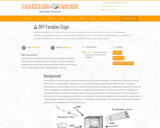
In this lesson, students will investigate electromagnetic interference. They will also build their own Faraday cage. The resource, ''Faraday Cage (pdf)'' included in "Lesson 3 Neurophysiology and Neuropharmacology" is a part of "Unit 01 Intro to neuroscience" included in Health & Life Sciences HLS - Course 4.
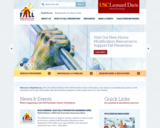
Rich resource collection of educational materials and evidence summaries for service providers, teachers and investigators. Includes video material, as well as links to CDC patient education materials.
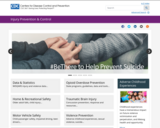
Brochures and posters with falls prevention tips directed at older adults. English, translated into spanish and chinese.
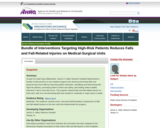
An interactive 2 hour lesson where RNs work collaboratively to learn about 4 aspects of falls prevention: (1) Magnitude & Impact, (2) Falls Risk Assessment, (3) Evidence-Based Falls Prevention Interventions, & (4) Evaluation of Falls Programs. Peer-reviewed literature and pre-appraised evidence sources are highlighted.

An interactive 2 hour lesson where RNs work collaboratively to learn about 4 aspects of falls prevention: (1) Magnitude & Impact, (2) Falls Risk Assessment, (3) Evidence-Based Falls Prevention Interventions, & (4) Evaluation of Falls Programs. Peer-reviewed literature and pre-appraised evidence sources are highlighted.
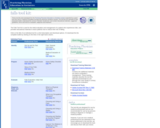
This links to a Falls Tool Kit which contains instruments that can be used for the initial evaluation and management of a patient who experiences falls. It also provides educational materials to teach patients how to reduce their risk of falling. The toolkit development was supported by the Hartford Foundation through the American Geriatrics Society.
It is part of a set of tool kits developed for the Practicing Physician Education in Geriatrics project supported by a grant from the John A. Hartford Foundation through the American Geriatrics Society. The tool kits are intended to help physicians better understand the common 'Geriatric Syndromes' and contain educational materials, suggested guidelines, forms and tools for evaluation, diagnosis and treatment.
Although designed to teach physicians about falls risk assessment and risk reduction, these tools can also be used by registered nurses, and rehabilitation professionals.
Users have the option of clicking on individual tools or they can download the the complete toolkit.